This post is the second part of a two-part article. Read Part One for background information on labor shortage claims by larger agricultural companies and the work of Secretary of Agriculture Claude Wickard.
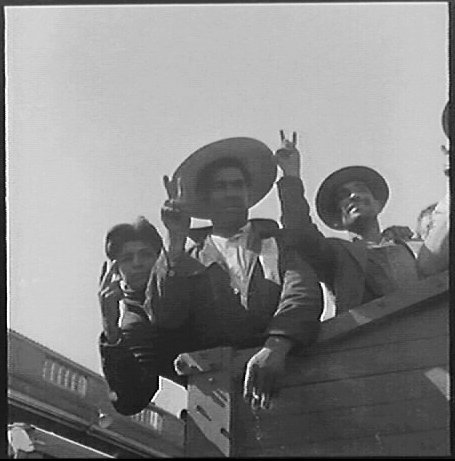
The U. S. government began importing Mexican laborers to work on American farms almost immediately after Secretary of Agriculture (and Carroll County native) Claude Wickard successfully negotiated with the Mexican government to begin what became known as the Bracero Program. The first workers arrived in the fall of 1942 and by February 1943, approximately 4,000 Mexicans were at work on farms in the American Southwest. Thousands more were employed by the railroad industry in the name of war preparedness. East Coast growers and processors soon demanded access to foreign workers and the federal government again complied. By April 1943, the program included Jamaican and Bahamian workers as well. By early 1944 bracero were at work laying railroad tracks and picking and canning produce in the Hoosier state.*
Thus far, histories of the Bracero Program have focused on the West and Southwest, touching on East Coast dairy workers, and neglecting the Midwest altogether. This is not only a gap in historiography, its a bizarre one, considering the Midwest’s role as the corn belt or breadbasket. It’s the region that has long fed much of the United States, and during WWII, the world. As economists, policy advisers, and policymakers look to historians’ studies of the Bracero Program as the root of current immigration and agricultural policies, it’s especially important to include the important agricultural region of the Midwest. Examining the stories available in Indiana newspapers is a good first step toward creating a more complete picture of the issue.
Alternative Labor in the Cornbelt
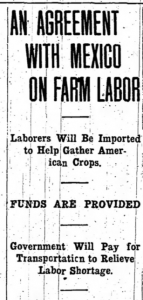
Even before the arrival of the braceros, Indiana newspapers reported on Wickard’s agreement with Mexico and anticipated the effect of the workers’ arrival. The Tipton Daily Tribune focused on the assertion that braceros would be imported “only when domestic workers are not available to meet the demand” and would “not replace other workers.” The article also detailed the guarantees negotiated by the Mexican government intended to protect the braceros: their wages would match prevailing local rates with a minimum wage of 30 cents an hour; they were guaranteed employment for at least three-fourths of their stay in any area; and the U. S. government was responsible for their transportation back to Mexico at the end of their employment.
The Bremen Enquirer added information on living conditions, noting that employers must guarantee “adequate housing, health and sanitary facilities.” This meant only three workers or a four-person family could live in a twelve by fourteen foot space with “facilities for cooking, sleeping, laundry, bathing, and adequate sanitary toilets and means of waste disposal.” Most newspapers reiterated statements on the shortage of workers caused by the war effort [see Part One] and patriotically supported the importation of workers from Mexico to help feed the troops. When the workers actually arrived in their hometown, however, the Hoosier response was mixed.

Mexican farm workers first arrived to work on Indiana farms managed by large companies with profitable government contracts. In May 1944, the Argos Reflector reported that the H. J. Heinz Co. had leased a three hundred acre farm north of Argos in Marshall County, “as part of their program to insure delivery of war time food commitments.” According to the Reflector, this was the Heinz Co.’s “largest venture in the country.” The article reported that 114 acres of the farm was planted with cucumbers, “one of the largest items of the company’s list of 57 processed foods.” The Argos reported that the company produced “about half” of the cucumbers provided to the U. S. navy where “pickles are an everyday part of the sailor’s menu.”
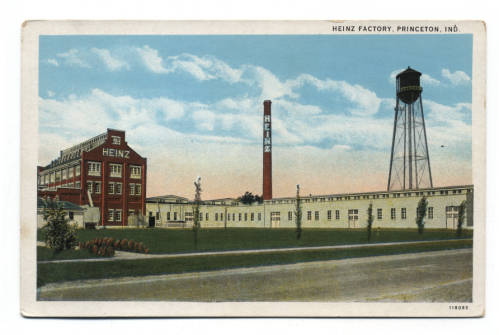
The Reflector reported that the company was constructing forty “bunk houses” for “an estimated 200 Mexican field laborers.” The article stated that the workers would harvest the cucumber crop and then would be offered jobs “in the tomato fields.” This Marshall County newspaper described the laborers both as “Mexicans” and “migrant workers” and so it is unclear if they were imported Mexican workers or migratory Mexican-American workers.* However, the fact that the company was building housing, implies that they were fulfilling the contract requirements for government-placed bracero workers. It’s possible that Heinz was using both migratory labor and braceros. It’s also possible that the Argos Reflector did not or could not distinguish between workers from Mexico and migrant workers of Mexican heritage.
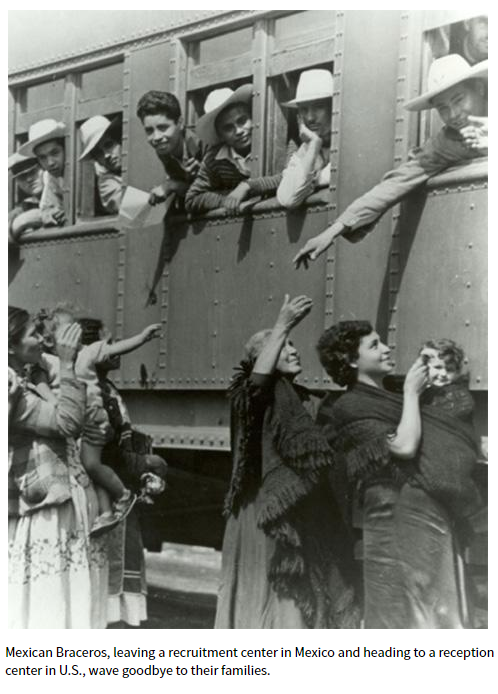
While I have yet to uncover WWII-era interviews from Indiana based workers that might tell us about their experience, we can get a feel for how they were living from newspaper coverage. Newspapers reported that the braceros preferred outdoor farm work as opposed to work inside the canneries. The Reflector attributed this to their supposed preference for working outside, as if that were a trait of all Mexican people. Putting such a stereotype to one side, reading between the lines, and placing this information in context, however, we can draw some conclusions about their labor conditions. Peeling tomatoes, canning, and running label machines would have been monotonous and the large boilers likely made the work extremely hot and uncomfortable. Newspapers reported that the “200 field laborers” employed by Heinz were “selected for industrious and good conduct.” It’s highly likely that part of “good conduct” was not complaining about conditions.
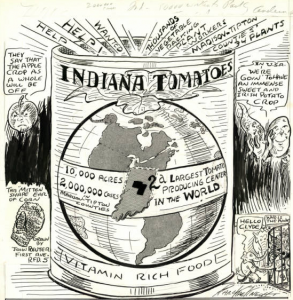
In August 1944, the Indianapolis Star reflected the national claim that there were “critical shortages of farm labor” and stated that emergency workers were needed in several Indiana counties. The paper reported that sixty “Mexican workers” arrived in Starke County the previous week “to assist with the pickle crop.” The State Supervisor of Emergency Labor stated that 100 more Mexican workers would be assigned to farms in that county. The Star reported that twenty-five Mexican laborers would soon be at work in Wells County, also in picking cucumbers to be processed into pickles.
The Star made it clear that these were bracero workers and differentiated “Mexican workers” and “migrant workers.” After reporting the statistics for the “Mexican workers,” the paper noted that “further assistance is expected from an estimated 500 migrant families from Tennessee, Arkansas and Missouri.” We know even less about the experiences of these Mexican workers. The only thing we know for sure from this Star article is that they made $3.10 to $3.50 per day. However, the official bracero agreement did not put restrictions on hours.
Also in August 1944, an article in the Alexandria Times-Tribune reported that “several truck loaders [sic] of Mexican workers” were arriving in Grant County “to assist with the harvest there.” The Times-Tribune reported a local labor shortage in the “tomato growing belt” and the need for emergency workers. Again, we know little about the workers’ experience. However, the Reflector, the Star, and the Times-Tribune all mentioned the seasonal opening of the canneries in concert with the arrival of Mexican workers. While it is not always clear if the workers were migrant or bracero, it is clear that the Indiana canneries were benefiting from their inexpensive, non-unionized labor.* In fact, in September 1945, the Elwood Call-Leader reported that “some 20 Mexican workers face deportation in Crown Point.” The men, who had been “employed in and around Kokomo,” were charged with “having failed to comply with regulations under which they were imported as workers.” This failure to “comply” could have been legitimate, but it could also refer to worker complaints about working or living conditions, mistreatment, or unfair pay.
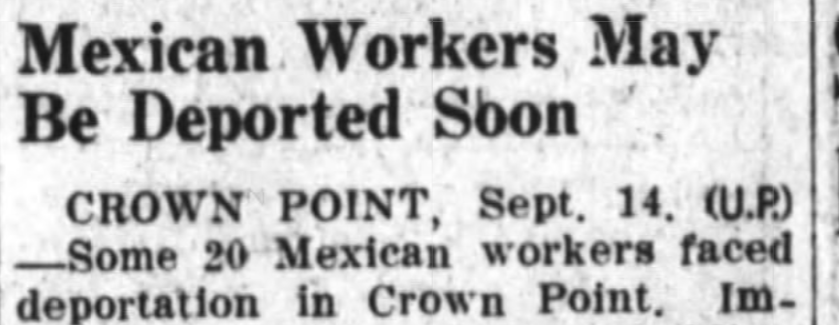
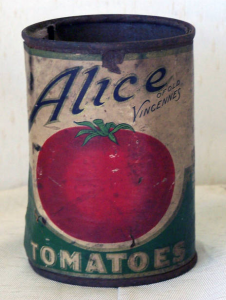
An August 29, 1945, an article in the (Seymour) Tribune raises some flags about worker mistreatment. The newspaper reported: “The Vincennes Packing Company here has twelve Mexican farm workers which they secured, and have housed in the building adjoining their plant.” This plant, which also canned tomato products, told the paper that “while these men were secured . . . for the use and convenience of their own growers, these men can be used at other farm work when they are not otherwise busy.” Again, in the same article, the manager of the company stated that while the Mexican workers were employed “to get tomatoes picked, and other canning crops taken care of . . . they can be used at other farm work when not needed for tomato picking.” It was mainly large companies that could afford to transport, house, and pay the guest workers, not small farmers. However, the large company farms and processors of Indiana were surrounded by small family farms. This Tribune article seems like a thinly-veiled advertisement to local farmers announcing that the packing company was willing to hire out their workers. The question begging to be asked is: who made money off this arrangement, the company or the workers? Nothing can be definitively concluded from this article, but the repeated declaration of the workers’ availability does seem suspect.
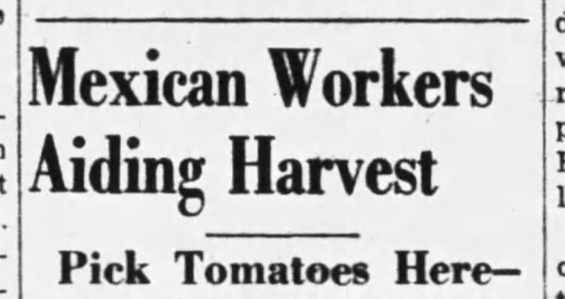
“Open Your Hearts”: Railroad Braceros and Hoosier Response
Mexican railroad workers were also essential to the war effort as increased transportation was necessary to ship supplies from the heartland to the front lines. The response to the arrival of Mexican railroad workers by Indiana communities ranged from attempts to run them out of the neighborhood and pin local crimes on them to wholehearted welcome and support.
In Irvington, just east of Indianapolis, a small but vocal group of prominent citizens made it clear that they did not want Mexican laborers living in their neighborhood and especially not in the historic home of an important nineteenth century politician. Ironically, the politician whose home the residents suddenly wanted to save after years of neglect belonged to George Washington Julian, an important abolitionist who advocated for the civil rights of all people regardless of race or gender. In an 1855 speech on immigration Julian stated:
“Let them come . . . let them have a welcome on these shores. Their motive is a very natural and at the same time honorable one, — that of bettering their lot. . . To proscribe him on account of his birthplace is mean and cowardly as to proscribe him for his religious faith or color of his skin. It is the rankest injustice, the most downright inhumanity.”
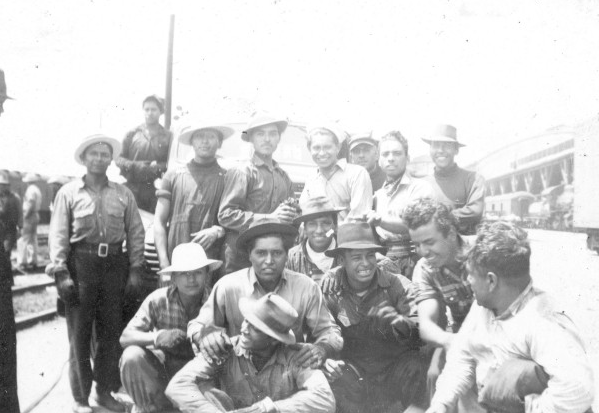
Irvington residents, however, didn’t internalize the lessons of the man they claimed to revere. The Indianapolis News reported in January 5, 1944 that “Historic Irvington was up in arms” over plans to house Mexican workers of the Pennsylvania Railroad in the Julian home. W. O. Teufil, local superintendent of the railroad, stated that the company had acquired the property and began renovating it to house twenty workers. He stated, “We certainly will make the property more presentable than it has been. Its historic value will not be destroyed. We simply plan to return it to the livable condition to which it once was.”
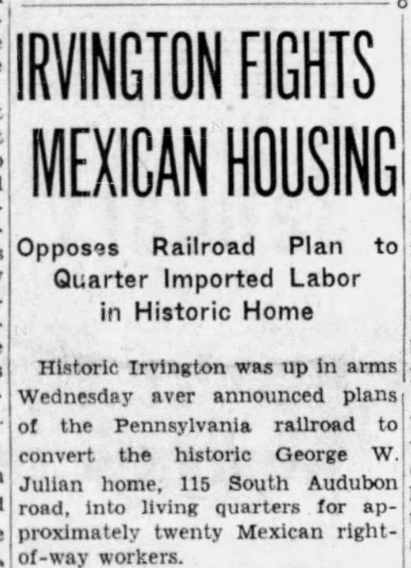
An Irvington city councilman, however, claimed that turning it into a boarding house would create a zoning violation, and the president of the Irvington Union of Clubs stated that the organization would “begin an immediate inquiry to learn the details of the plan in the hope that it could be stopped.” Teufil expressed his surprise to the opposition and stated: “These are not to be outlaw workers or anything of that sort.”
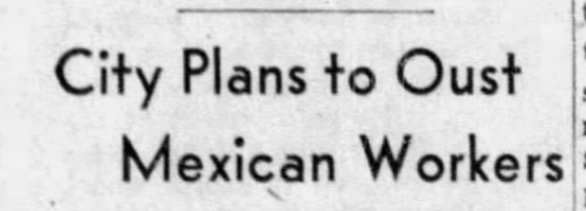
On January 8, the Indianapolis News reported that the city “began preparing legal action to oust from twenty to thirty Mexican workers for the Pennsylvania railroad from the historic George W. Julian home.” Despite the fact that the railroad had gotten over a thousand dollars worth of permits, the city building commissioner notified the railroad that they had not obtained proper permits for renovation and that they needed to evacuate the workers.
In strong contrast to his neighbors, an Irvington resident named M. B. McLaughlin wrote a statement for the News condemning the behavior of those working to remove the Mexican workers from the Julian home through the false pretenses of zoning ordinances. He wrote:
Whether or not you realize it, you are selling short your sons, brothers, husbands on far fighting fronts by your proposed action in closing the Julian home . . . These strangers have come to do a vital job which, ultimately, may mean life, not death, for your dear ones . . . How proud your service men would be . . . if you would open your hearts and hearths to strangers among you.
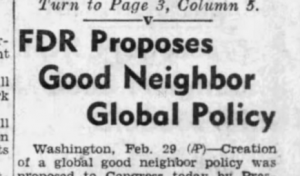
Meanwhile, the city prepared legal action, and on February 23, the Indianapolis Star reported that the Pennsylvania railroad was working to repair a local gymnasium to house the workers. More Irvington residents spoke out in support of the workers aiding the Allied cause. A local resident named C. S. Brook wrote the mayor, condemning the actions of his xenophobic neighbors. He wrote: “We would state that these few do not speak for Irvington.” Fortunately for the war effort, those working to keep the Mexican workers in the Julian home won out in the end. The Indianapolis Star reported on March 23:
It was learned a ‘Good Neighbor’ policy promulgated between city officials, the Pennsylvania Railroad and Irvington residents would permit the Pennsylvania to continue housing 29 Mexican track workers in the old George W. Julian home…
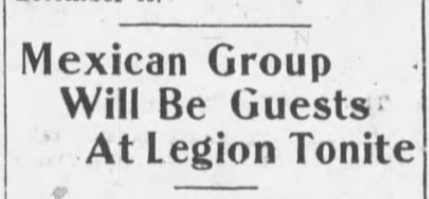
In a drastically different scene, Mexican workers employed by the Pennsylvania Railroad were heartily welcomed and thanked for their labor by the World War I veterans at an American Legion post in Valparaiso. Charles Pratt Post No. 94 invited thirty-five braceros to a “Pan American Day” celebration on April 14, 1944. The (Valparaiso) Vidette-Messenger of Porter County described the event in detail and extensively quoted its host, Post Commander Franklin Burrus. The celebration began with “the advancement of the colors of both countries while legionnaires and guests stood at attention. The Hoosier attendees broke into the U. S. national anthem and when they were finished, their Mexican guests “responded with their national anthem.” Commander Burrus then welcomed them in a touching speech. He thanked the Mexican workers for their contribution to the war effort and expressed his hope that through their alliance, Mexico and the United States would grow closer in times of peace as well. Burrus continued:
We of the Legion, having served in World War 1, and some in World War 2, probably have a deeper appreciation of the need for inter-American co-operation than many other persons. We realize that you men from Mexico are certainly making an important contribution to the prosecution of this war by your present work in the great industry of railway transportation. We realize that you are away from home, in another country, separated from intimate friends and loved ones and we know what that means. Nevertheless, we hope that your experiences here will all be pleasing to you and that your country and American will both benefit by your having been here.
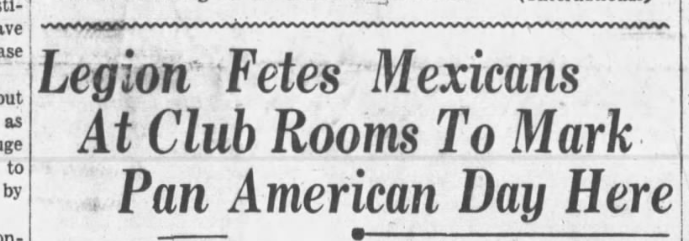
Luckily, we know a bit more about the workers in this story. They were in the United States for six months as a part of the bracero program’s railroad initiative. From quoted statements by their supervisor, Charles Weiss, we can glean that he greatly respected their work. Weiss told the Vidette-Messenger, “They are really making a great contribution to the war effort.” Weiss also seemed to care about the workers having a positive experience. He stated, “These men like it here and when they return to Mexico they will go as ambassadors of good will.”
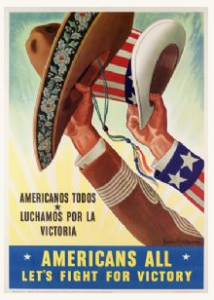
Of course, these are the interpretations of an American supervisor, not a Mexican laborer. While we can’t understand the full experience of the workers from the newspapers, we can get a taste of this one festive evening. Four Mexicans “favored” the audience “with songs of their native country.” They must have performed for some time, as the newspaper reported the singing of “solos, duets and ensembles.” Fortunately, the newspaper gave the Mexican musicians’ names, several likely misspelled. These are the only names of Mexican workers that I came across in my research. They are:
Cesario Marquise
Francisco Martinis
Angelo Lopez
J. C. Custro
After the music concluded, the group watched the movie War on the High Seas about the attack on Pearl Harbor. The Vidette-Messenger reported that the evening concluded with “the serving of refreshments, following which Angelo Lopez, formerly a Mexican soldier, put on a demonstration of the manual of arms and playing the drum.”
While this is the lengthiest description of a warm Hoosier welcome for Mexican railroad workers, it is not the only such story. In January 1944, the (Cambridge City) National Road Traveler praised the work of fifty Mexicans residing just east of Cambridge City who were making “the dirt fly,” laying railroad line. The paper also reported enthusiastically on their patronage of local businesses: “The Mexican workmen have been keeping local stores busy caring for their needs while here.” So while they didn’t roll out the red carpet like Valparaiso, Cambridge City was at least accepting and grateful for the economic boost. In June 1944, the (Richmond) Palladium-Item gave an update on the “fifty Mexican young men” living “in a 12-car camp unit near Cambridge City while working on the Pennsylvania railroad line between Indianapolis and Richmond.” The newspaper reported, “Although the boys have only been here two weeks of the six months they contracted to work, most of them already have decided they want to make Indiana their home.” This would not have been true for those Mexican railroad workers stationed in Elkart, however.
In September 1945, a fifteen-year-old white girl named Sally Joan Young was raped and murdered in Elkhart. In the ensuing weeks, the Indianapolis Recorder reported that the Elkhart police and newspapers “fanned” false reports that “the crime had been committed by a Negro.” An African American man picked up on another incident was held in a nearby jail as “practically” guilty. He was “frequently and intensively questioned about the school girl slaying.” According to the Recorder:
Several Mexican railroad workers had also been arrested and grilled, by local police and the FBI, during the six-weeks attempt to pin the crime on a person of a dark-skinned racial group.
Eventually, a white man who was seen in bloodstained clothes by several witnesses, confessed to the crime. The Elkhart Truth reported:
Incidentally, it will be recalled that, when the crime was committed, there was a quick flareup of suspicion toward members of two dark-skinned races resident in Elkhart. As it turns out, the murderer was neither a Negro nor a Mexican.
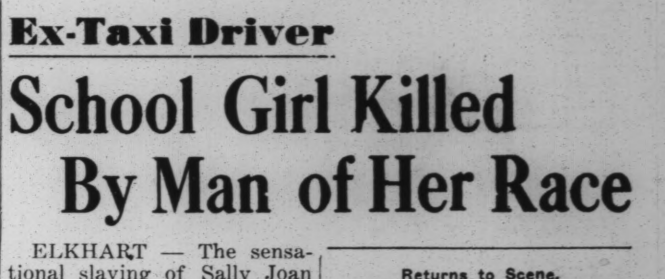
In researching this topic, I found only one mention of an interpreter employed for the workers. Thus we can imagine the fear that the young men experienced as they likely received the same frequent and intensive questioning as the African American suspect by the police and the FBI.
More research is needed to examine complaints of the workers concerning injustices. Again, newspapers give us hints. In 1946, the Indianapolis Recorder reported that the Mexican government would no longer send workers to Indiana. The Mexican Minister of Labor Francisco Trujillo “cited low wages, illegal withholding of wages, poor living conditions and lack of medical care.”
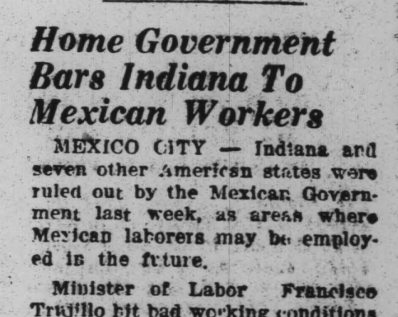
Jamaican and Bahamian Workers
In April 1943, Congress passed Public Law 45 allowing the importation of workers from the Caribbean. Approximately seventy thousand Jamaicans, Barbadians, and Bahamians arrived to work on U.S. farms between the passage of the law and the end of the Farm Worker Program in 1947.
In July 1943, the Greencastle Daily Banner reported that twenty Jamaican workers were “relieving the farm labor shortage in Gibson County.” They were at work “detasseling and hoeing hybrid corn on the 9,800 acre Princeton Farms, [the] largest agricultural unit in Indiana.” The paper reported that the workers lived in a new bunk house with separate building for the kitchen and mess hall where a Jamaican cook provided their meals. In August, the Banner followed up on the July report, stating that the Jamaicans would work for Gibson County orchard growers and then return to Princeton Farms for the corn harvest.
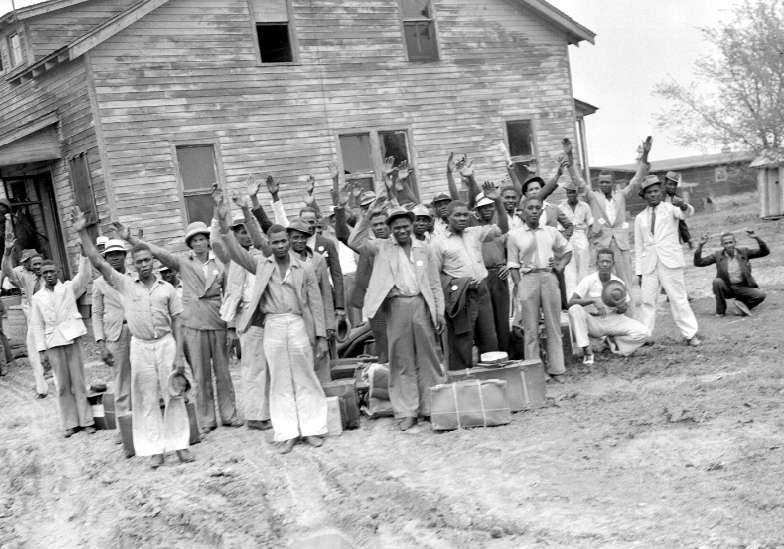
Again, there are few reports of their experiences in the workers own words, but we can glean some information about their lives from these newspaper reports. For example, the Banner writer interviewed Hoosiers who worked with the Jamaicans. The farm manager described them as “happy-go-lucky” but also seriously “religious.” He said they complained little as the worked. They disliked only the cold Indiana mornings and the lack of Jamaican rum. These statements reek of stereotyping, but again show us that workers were motivated to not complain because they could be repatriated without pay.
Like they did for Mexican workers, Indiana newspapers generally painted a positive picture of the Hoosier reception of Jamaican workers, relaying that they arrived to help with or even save the harvest, and ease the labor shortage. For example, the Indianapolis Star reported August 8, 1944, that thirty-two Jamaicans would soon arrive in LaPorte County to pick peaches and in nearby counties others were “at work in connection with the canning industry.”
The Alexandria Times-Tribune reported a few weeks later that a large number of Jamaicans arrived in Madison County as “emergency pickers” for the tomato fields. The article also noted that the canneries would soon begin operations, reinforcing the connection noted in Part One between the demand for inexpensive foreign labor and the Indiana tomato canneries. The Daily Clintonian, likewise, reported from Vincennes that “eighty Jamaican and Mexican agricultural workers will arrive in Knox county around May 15 to aid in production and harvesting of the 1945 tomato crop.”
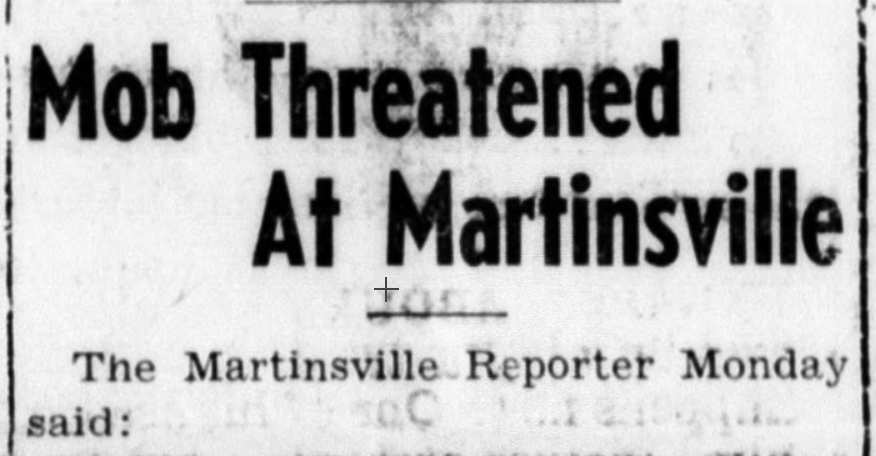
In Martinsville, however, Jamaican workers had a close call with a riotous mob. The Martinsville Reporter told of “a display of mob spirit by a group of trouble makers and agitators . . . directed against the twenty or more Jamaican workers that had been sent into the county to relieve the current labor shortage.” There was apparently enough “loud talk” that the local National Guard unit armed themselves with “tear gas equipment” and sent for the state police. In the face of the show of force, “the loud mouth leaders of the agitators began to have business elsewhere.” And while the situation was diffused, the Reporter noted that “a spark at the right time might have caused grave trouble.”
Response of African American Newspapers
While many Indiana newspapers described these guest workers as saviors of harvests and important contributors to the war effort, African American newspapers saw their arrival through a different lens – the lens of available black workers who have been repeatedly denied similar jobs for a fair wage (as discussed in Part One).
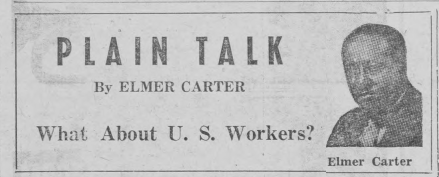
The Indianapolis Recorder reported that there were plenty of agricultural commodities being produced and that the supposed labor shortage was not affecting production goals. The problem was distribution, not production or labor. The Evansville Argus took issue specifically with the guest worker program. In an editorial for the Argus, journalist Elmer Carter criticized the recent importation of workers from the Bahamas to Florida. Carter wrote,
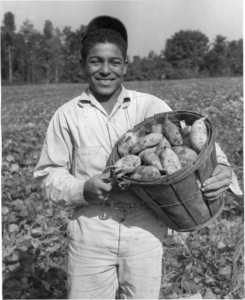
There are a hundred thousand unemployed disinherited black and white share croppers in the South anxious to work in Florida or anywhere else.
He stated that the Southern Tenant Farmers Union offered to send 20,000 share croppers to the area in need, but the Florida growers did not want them. The union workers would have been an integrated labor force of black and white workers, so the growers would have to pay black and white laborers the same wage. Carter says the workers were rejected because the growers did not want to pay black workers the same wage as white. Instead, they wanted Bahamians because they could exploit their labor. Carter called on Secretary Wickard to “examine the motives which have prompted the Florida growers to spurn the offer of unemployed and available American workers.”
As it was correct in assessing the labor shortage myth, the Argus was again correct about the exploitation of workers. Importing foreign workers weakened the bargaining position of domestic workers in their struggle to increase their wages. However, this was not because foreign workers cost less. Employers had to pay a minimum wage and transportation as well as provide housing. The incentive was that foreign workers could not bargain or complain. If they did, they were repatriated. According to historian Cindy Hahamovitch:
The importation program was certainly more palatable to growers than the effort to relocate domestic farmworkers from areas of surplus to areas of scarcity, but it undermined farmworkers’ efforts to lift themselves out of poverty. Farmworkers who struggled to bargain up their wages after 20 years of agricultural depression found themselves thrown into competition with farmworkers from abroad who could be deported for making the very same demands.
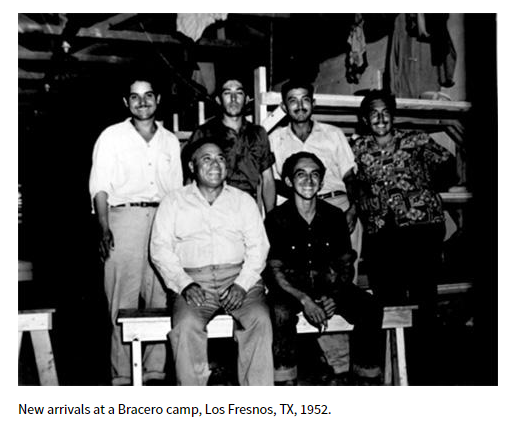
According to the Bracero History Archive, the worker safeguards negotiated by the Mexican government worked only in theory. In practice, however, U.S. employers ignored the safeguards and many braceros “suffered while growers benefited from plentiful, cheap, labor.” The U.S. extended the bracero program for decades, using it not only as a supply of cheap labor but as a policy for controlling immigration. Its legacy continued to influence policy making today. Regardless of the intentions of such bureaucrats and agricultural corporations in importing labor, there is no question that these Mexican and Caribbean men made an important contribution to the Allied war effort.
Note
* Indiana farms had used migratory workers for some time. Some of these workers may have been Americans with Mexican heritage or Mexican immigrants who came to the United States of their own accord, both legally and illegally. By using newspaper articles only, not in conversation with government records, it is not always clear if the workers described as “Mexican” were migratory workers or were workers imported by the United States government. I have noted with an “*” where the newspapers are not specific.
Further Reading:
Bracero History Archive. Roy Rosenzweig Center for History and New Media, George Mason University, Smithsonian National Museum of American History, Brown University, and the Institute of Oral History at the University of Texas El Paso, http://braceroarchive.org/
Calavita, Kitty. Inside the State: The Bracero Program, Immigration, and the I.N.S. (New York: Routeledge, 1992).
Collingham, Lizzie. The Taste of War: World War II and the Battle for Food. New York: Penguin Books, 2011.
Craig, Richard B. The Bracero Program: Interest Groups and Foreign Policy. Austin: University of Texas Press, 1971.
Gamboa, Erasmo. Bracero Railroaders: The Forgotten World War II Story of Mexican Workers in the U.S. West (Seattle: University of Washington Press, 2016).
Gamboa, Erasmo. Mexican Labor and World War II: Braceros in the Pacific Northwest, 1942-1947 (Austin: University of Texas, 1990).
Hahamovitch, Cindy. “The Politics of Labor Scarcity: Expediency and the Birth of the Agricultural ‘Guestworkers’ Program,” Report for the Center for Immigration Studies, December 1, 1999, accessed https//cis.org/Report/Politics-Labor-Scarcity.
